Dubai, UAE
In front of the Dubai Museum is a traditional dhow, and beyond are the minarets of the Grand Mosque.
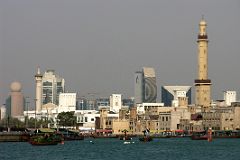
The Grand Mosque dominates the Bur Dubai skyline, seen from Dubai Creek.
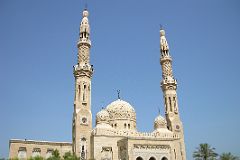
The stone Jumeirah Mosque has a massive central dome, built in the medieval Fatimid tradition with two minarets.
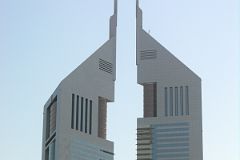
The two Emirates Towers, housing offices and a hotel, are balanced by the curvilinear base structure.
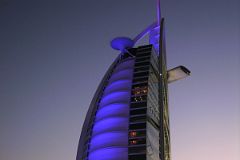
The translucent fiberglass wall of Burj Al Arab serves as a projection screen for a nightly light show.
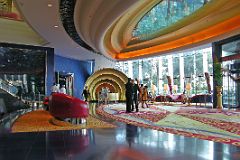
The entrance of Burj Al Arab has large curved red leather seats, yellow carpet, with a blue floor.
After arriving in Dubai, we checked in to the comfortable and affordable Arabian Court Hotel in Bur Dubai. We started our first day by walking a few metres to the Dubai Museum. We spent over an hour looking at the displays outside in the courtyard and inside the museum (ahh, air conditioning). From there we walked in the 40C heat past the multi-domed Grand Mosque and visited the two-story Sheikh Saeed al-Maktoum museum. In the slightly cooler temperatures in the evening we walked along the promenade next to Dubai Creek, admiring the modern building architecture on the other side.
We started our second day by taking a taxi to the Emirates Towers, twin triangular gunmetal-grey towers on Sheikh Zayed Rd. We then walked along the road admiring the many other new buildings and others still under construction like the Burj Dubai. From there we took a taxi to Deira and visited the Gold Souq, and then hired an abra (water taxi) to take us down the creek. In the afternoon we visited the spectacular 7-star Burj Al Arab hotel, enjoying the internal and external architecture.
We started our third and last day in Dubai by taking the tour of the Jumeirah Mosque as part of the ‘Open Doors, Open Minds’ cultural understanding program. From there we took a step back in time, visiting the Bastakia Quarter where the traditional courtyard houses with wind towers are being renovated. In the evening we took a taxi to the airport and departed Dubai.